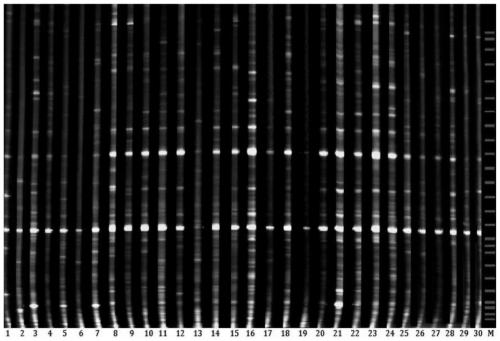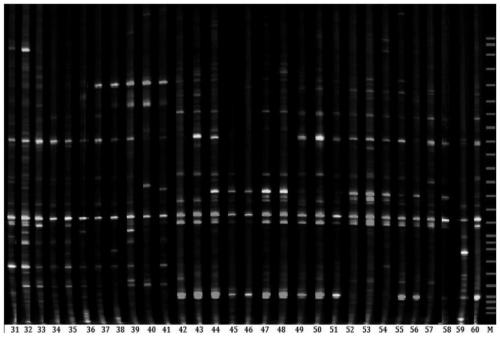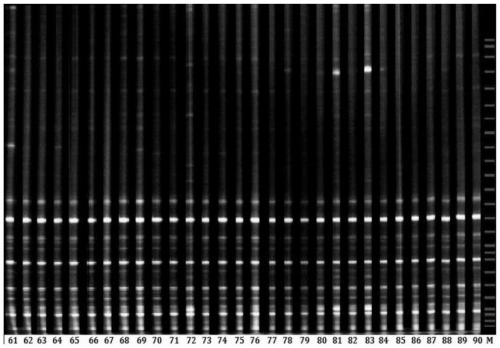SRAP molecular marking method for genetic diversity analysis of tetracera asiatica
A technique of genetic diversity and molecular markers, which is applied in the field of SRAP molecular markers for the analysis of the genetic diversity of the vine, can solve problems such as the study of the genetic diversity of the vine, and achieve clear bands, high polymorphism, and high The effect of polymorphism
- Summary
- Abstract
- Description
- Claims
- Application Information
AI Technical Summary
Problems solved by technology
Method used
Image
Examples
Embodiment Construction
[0059]In order to express the present invention more clearly, the present invention will be further described below through specific examples. The experimental methods used in the following examples are conventional methods unless otherwise specified. The materials and reagents used in the following examples can be obtained from commercial sources unless otherwise specified.
[0060] (1) Experimental materials
[0061] 90 parts of Tinleaf vines used in this test were collected from Guangxi, Guangdong, Hong Kong, etc., see Table 1 for details.
[0062] Table 1 Test material numbers and sampling points
[0063]
[0064]
[0065]
[0066] (2) SRAP primer design
[0067] The 9 pairs of primer combinations used in the present invention are all fluorescently labeled and synthesized by Beijing Dingguo Changsheng Biotechnology Co., Ltd. After the primers are synthesized, centrifuge and then dilute and shake to dissolve the primers as required. Dilute the primers to 10 μM ...
PUM
 Login to View More
Login to View More Abstract
Description
Claims
Application Information
 Login to View More
Login to View More - R&D
- Intellectual Property
- Life Sciences
- Materials
- Tech Scout
- Unparalleled Data Quality
- Higher Quality Content
- 60% Fewer Hallucinations
Browse by: Latest US Patents, China's latest patents, Technical Efficacy Thesaurus, Application Domain, Technology Topic, Popular Technical Reports.
© 2025 PatSnap. All rights reserved.Legal|Privacy policy|Modern Slavery Act Transparency Statement|Sitemap|About US| Contact US: help@patsnap.com



